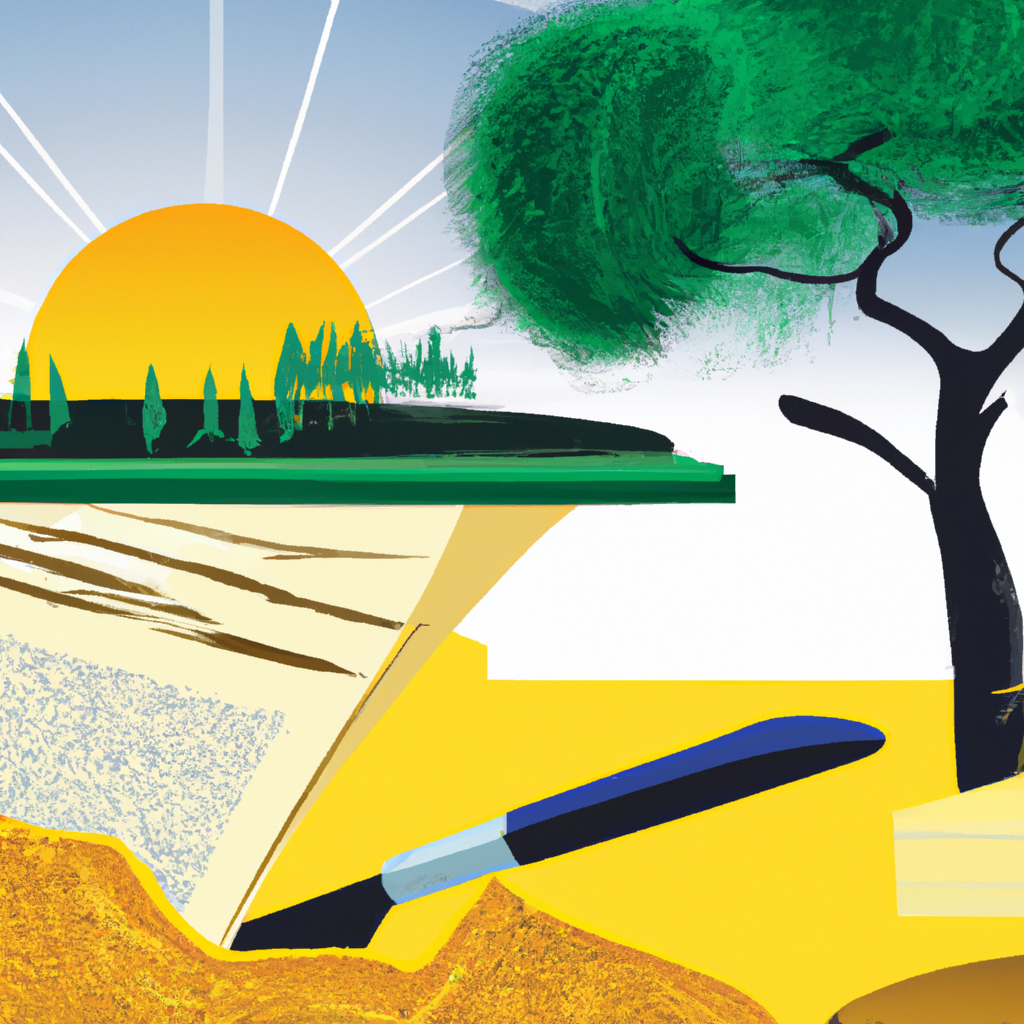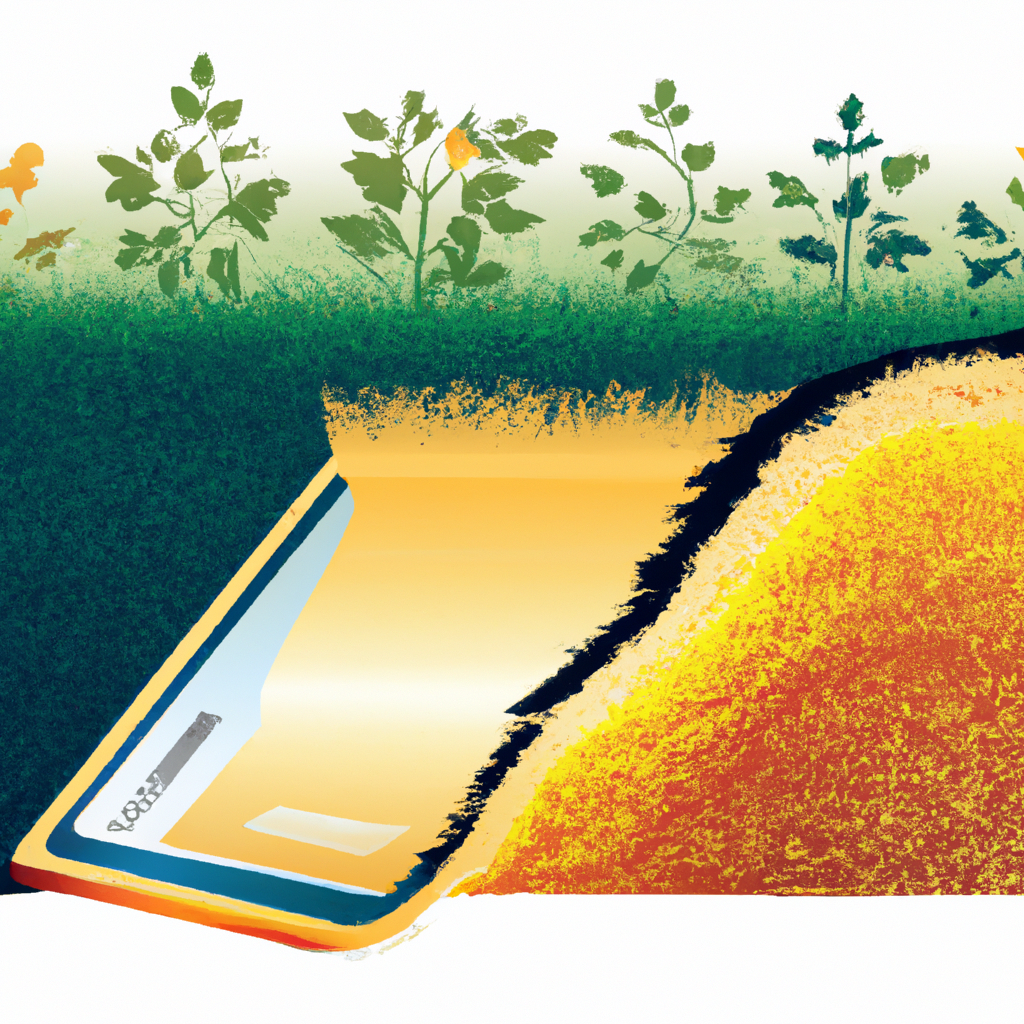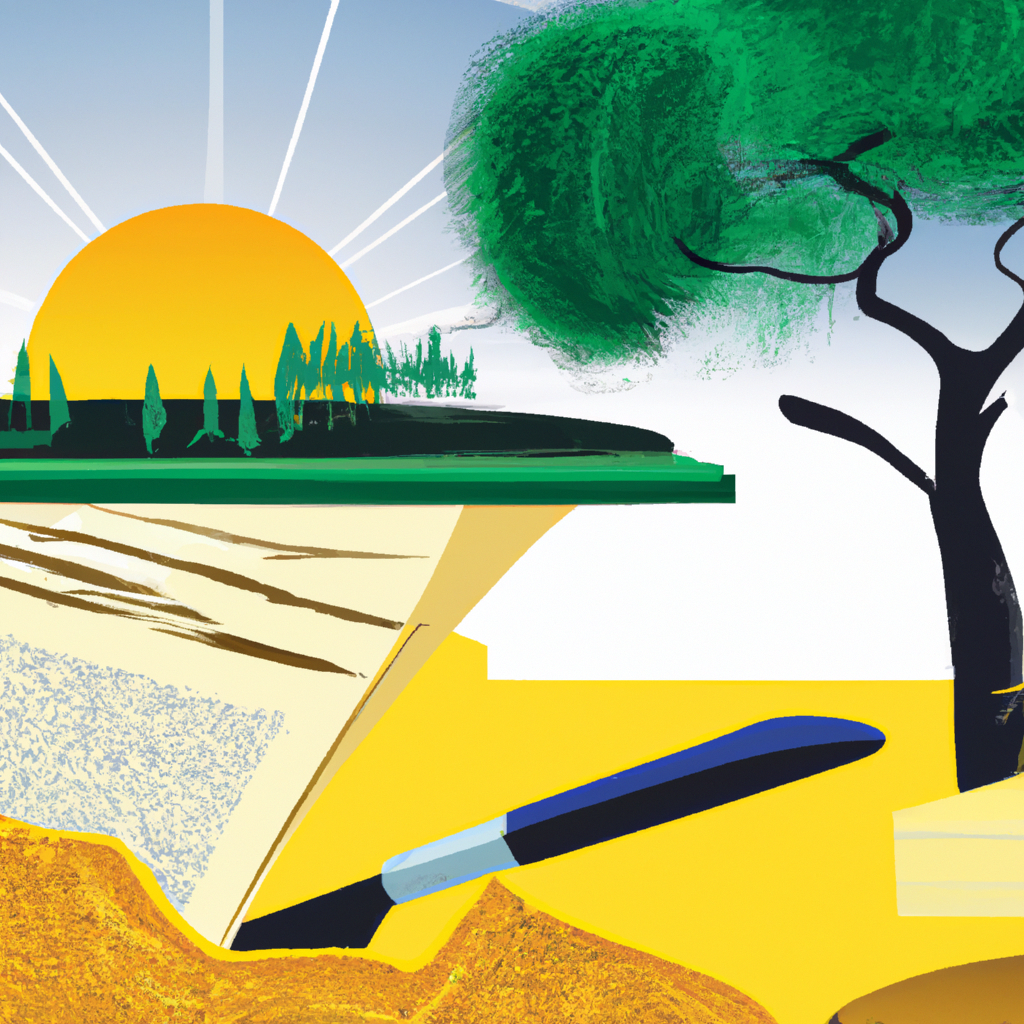We may earn money or products from the companies that may be mentioned in this post.
Maintaining a golf course may seem like a breeze for the casual player, but the hidden costs behind its flawless greens and well-manicured fairways may surprise you. From carefully tending to the grass to managing irrigation systems, a golf course requires a significant amount of time, effort, and monetary investment. In this article, we will uncover the various aspects of maintaining a golf course and explore the financial implications that come with ensuring a memorable golfing experience for players of all skill levels. So, grab your clubs and join us as we delve into the intriguing world of golf course maintenance.

Overall Maintenance Costs
Maintaining a golf course involves various aspects, each with its associated expenses. From labor costs to equipment and machinery costs, fertilizer and pesticide expenses, watering and irrigation costs, and other operational costs, these all contribute to the overall maintenance costs of a golf course. By understanding each category and the factors affecting maintenance costs, golf course owners and managers can effectively plan their budgets and ensure the course’s optimal condition for players to enjoy.
Labour Costs
One significant component of maintenance costs is labor. Golf courses require a dedicated workforce to carry out numerous tasks, ranging from groundskeeping and landscaping to management and administrative duties. The staffing needs of a golf course vary depending on its size, design, and level of usage.
Groundskeeping Staff
The backbone of golf course maintenance is the groundskeeping staff. These individuals are responsible for mowing, trimming, edging, and maintaining the course’s appearance. The labor costs associated with groundskeeping staff include salaries, benefits, training, and employment taxes. The larger the course and the more extensive the grounds, the more staff will be required, consequently increasing labor expenses.
Management and Administrative Staff
A well-run golf course also requires a capable management and administrative team. These professionals oversee operations, coordinate with other departments, manage budgets, and ensure the smooth functioning of the facility. Salaries, benefits, and administrative expenses are included in the labor costs for this category.
Seasonal Staff
Many golf courses hire seasonal staff during peak playing seasons or for specific maintenance projects. These temporary employees help with tasks such as aerating, overseeding, and other agronomic practices. Seasonal staff costs can vary depending on the size of the crew needed and the duration of their employment.
Equipment and Machinery Costs
To maintain a golf course, a wide range of equipment and machinery is required. These tools facilitate tasks such as mowing fairways, greens, and roughs, aerating the turf, and performing other essential maintenance operations.
Initial Capital Investment
The acquisition of the necessary equipment and machinery represents a significant upfront expense for golf course owners. This can include items such as mowers, aerators, utility vehicles, and irrigation systems. The initial capital investment cost depends on the course’s specific needs and the quality and quantity of equipment required.
Maintenance and Repair Costs
As with any equipment, maintenance and repair costs are inevitable. Regular maintenance, such as blade sharpening, oil changes, and equipment inspections, helps keep the machinery running smoothly and extends its lifespan. Additionally, unexpected repairs may be required due to unforeseen breakdowns or accidents, further contributing to maintenance costs.
Replacement Costs
Golf course equipment has a finite lifespan, and eventually, replacement becomes necessary. Factors such as usage, maintenance practices, and the quality of the original purchase influence the longevity of equipment. Planning and budgeting for future equipment replacements are crucial aspects of managing maintenance costs.

Fertilizer and Pesticide Costs
Maintaining healthy turf and protecting it from pests and diseases are paramount for golf course management. Fertilizers and pesticides play a vital role in achieving these objectives. However, they can also represent a significant portion of the overall maintenance costs.
Types of Fertilizers and Pesticides
The specific types and formulations of fertilizers and pesticides used on a golf course depend on the turfgrass species, climate, and specific pest challenges. Different products have varying costs, and the selection should be based on efficacy, environmental considerations, and budgetary constraints.
Frequency of Application
Fertilizers and pesticides must be applied at the appropriate intervals to achieve optimal turf health and pest control. The frequency of application depends on factors such as the growth rate of the grass, pest pressures, and weather conditions. A more intense maintenance program may require more frequent applications, resulting in higher costs.
Costs of Application Services
In some cases, golf courses may outsource the application of fertilizers and pesticides to professional service providers. These companies have the expertise and equipment to efficiently apply the products. The costs associated with these services should also be factored into the overall maintenance budget.
Watering and Irrigation Costs
Water is a precious resource, and golf courses require a significant amount to maintain healthy turf and aesthetic appeal. Watering and irrigation costs encompass not only the actual water consumption but also the infrastructure required for distribution.
Water Source and Supply Costs
The cost of water depends on the source and supply arrangements of the golf course. Some courses may have access to a natural water source, while others rely on municipal water supplies or wells. The associated expenses may include water usage fees, pumping costs, and infrastructure maintenance.
Irrigation System Installation Costs
Installing a reliable and efficient irrigation system is essential for optimal turf health and water conservation. This includes the cost of materials, equipment, and labor required for system design and installation. Additionally, ongoing maintenance and repairs should be factored into the overall irrigation costs.
Maintenance and Repair Costs
Regular maintenance and occasional repairs are necessary to keep the irrigation system functioning effectively. Issues such as broken sprinkler heads, damaged pipes, or electrical malfunctions can contribute to increased maintenance costs. Proper monitoring and proactive maintenance can help mitigate these expenses over time.
Other Operational Costs
Beyond labor, equipment, fertilizers, pesticides, and water, there are various other operational costs that golf courses incur. These expenses are necessary to ensure a safe and enjoyable experience for golfers.
Utilities
Utilities such as electricity, gas, and sewer services are essential for the operation of facilities, including clubhouse, maintenance buildings, and amenities. Energy costs can fluctuate depending on factors such as the course’s size, level of usage, and energy efficiency measures in place.
Insurance
Golf courses must carry adequate insurance coverage to protect against potential liabilities, property damage, and other unforeseen events. Premiums can vary depending on factors such as the course’s location, coverage limits, and claims history.
Taxes
Property taxes are another operational expense that golf courses must consider. The amount of tax paid is typically based on the assessed value of the property and local tax rates.
Clubhouse and Amenities Maintenance
Golf courses often offer additional amenities to enhance the overall experience for members and guests. These may include clubhouse facilities, practice areas, swimming pools, and tennis courts. Maintenance and repair costs associated with these amenities should be accounted for separately from the primary golf course maintenance budget.
Factors Affecting Maintenance Costs
Several factors influence the overall maintenance costs of a golf course. Understanding these factors allows golf course owners and managers to make informed decisions and allocate resources effectively.
Course Size and Design
The size and design of a golf course can significantly impact its maintenance costs. Larger courses typically require more labor, equipment, and resources to maintain. Additionally, the complexity of the course’s design, including water features and landscaping, may contribute to increased maintenance expenses.
Location and Climate
The geographic location of the golf course influences maintenance costs due to varying weather patterns and environmental factors. Courses located in regions with extreme temperatures, high humidity, or frequent rainfall may require additional maintenance efforts to ensure optimal playing conditions. Water availability and costs also depend on the local climate.
Course Conditions and Soil Type
The condition of the course and the nature of its soil affect maintenance requirements. Courses with sandy soils may require more frequent irrigation and fertilization to promote healthy turf growth. Similarly, courses with challenging soil conditions may require specialized agronomic practices, further driving up maintenance costs.
Membership and Usage
The number of members and the frequency of play impact maintenance costs. Courses with a large membership or high usage rates may experience greater wear and tear, necessitating more frequent maintenance interventions and associated expenses.
Environmental Regulations
Compliance with environmental regulations and sustainability initiatives can influence maintenance costs. Implementing environmentally friendly practices or investing in renewable energy sources may initially incur additional expenses but can result in long-term cost savings and environmental benefits.
Course Size and Design
The size and design of a golf course have a significant impact on maintenance costs. The total acreage and the number of holes directly influence the extent of groundskeeping tasks required. Larger courses with more acreage demand additional labor and equipment resources to maintain the extensive greens, fairways, roughs, and other features. Moreover, the number of holes determines the overall maintenance workload and subsequently affects staffing needs and costs.
Total Acreage
The total acreage refers to the land area that a golf course occupies. The larger the acreage, the more expansive the course, and the greater the amount of maintenance work needed. Groundskeeping staff must mow, trim, and maintain a larger surface area, which translates to higher labor costs. Additionally, irrigation systems, fertilizers, pesticides, and water usage all increase with the increased acreage.
Number of Holes
The number of holes is a defining characteristic of a golf course. Maintenance costs are directly influenced by the number of holes, as each hole requires periodic mowing, aeration, and other maintenance practices. Courses with more holes generally require more groundskeeping staff, equipment, and resources, resulting in higher maintenance expenses.
Topography
The topography of a golf course affects maintenance costs due to its impact on drainage, irrigation, and accessibility. Courses situated on steep hills or uneven terrain may require additional measures to ensure proper water management and prevent erosion. Furthermore, the challenging topography can make maintenance tasks more time-consuming and physically demanding for the groundskeeping staff.
Presence of Water Features
Water features, such as ponds, lakes, and streams, can add aesthetic value to a golf course. However, they also require additional maintenance efforts and costs. Regular upkeep, water management, and potential filtration systems are necessary to maintain the water features’ cleanliness and prevent disruption to the course’s irrigation system.
Location and Climate
The location and climate of a golf course profoundly influence its maintenance costs. Different regions and climates present unique challenges, and adapting maintenance practices accordingly is vital.
Geographic Location
Golf courses located in different geographical regions may face diverse weather patterns and environmental conditions. Courses in coastal areas may be susceptible to saltwater intrusion or high winds, requiring additional measures to ensure turf health and structural stability. In contrast, courses in arid regions may have to contend with water scarcity and higher irrigation costs.
Seasonal Weather Variation
Seasonal weather variations can significantly impact maintenance costs. Regions with dramatic temperature fluctuations may require special attention to protect the turfgrass and irrigation systems from freeze-thaw cycles. Furthermore, excessive rainfall or drought conditions can necessitate adjustments in irrigation practices, potentially driving up water costs. Flexibility and adaptability are crucial in managing these seasonal variations effectively.
Water Availability and Costs
The availability and cost of water in a specific location directly affect maintenance expenses. Courses located in regions with abundant freshwater sources may have lower water costs compared to those relying on alternative sources such as wells or desalination. Additionally, courses facing water scarcity or strict water use regulations must implement conservation measures or invest in efficient irrigation technologies to manage costs effectively.
Optimized Staffing and Work Schedules
Efficient staffing and work schedules are essential for maximizing productivity and minimizing maintenance costs on a golf course. Proper task allocation, seasonal adjustments, and equipment use efficiency contribute to cost-effective management.
Task Allocation and Prioritization
Optimal task allocation ensures that the right staff with the appropriate skills are assigned to specific maintenance activities. By matching the workforce’s expertise to the required tasks, golf courses can improve efficiency and reduce labor costs. Prioritizing maintenance tasks based on urgency and impact on playing conditions further helps allocate resources effectively.
Seasonal Staffing Adjustments
Golf course maintenance needs can vary throughout the year, with peak periods of usage and seasonal agronomic practices. Adjusting staffing levels accordingly can help manage costs more efficiently. Hiring additional seasonal staff during busy periods or employing temporary workers for specific projects allows golf courses to meet demands without incurring unnecessary long-term labor expenses.
Training and Equipment Use Efficiency
Investing in staff training programs enhances their skills and efficiency in operating equipment and machinery. Well-trained staff can optimize equipment use, minimizing the risk of damage, and reducing repair costs. Furthermore, efficient equipment use and regular maintenance can extend machinery lifespan and reduce the need for premature replacements.
In conclusion, maintaining a golf course involves various expenses categorized under labor costs, equipment and machinery costs, fertilizer and pesticide costs, watering and irrigation costs, and other operational costs. Understanding the factors affecting maintenance costs, such as course size and design, location and climate, course conditions and soil type, membership and usage, and environmental regulations, allows golf course owners and managers to make informed decisions when budgeting for maintenance. By carefully managing expenses and implementing cost-effective practices, golf courses can maintain a high standard of playability while keeping maintenance costs under control.
